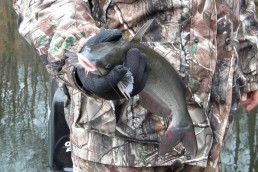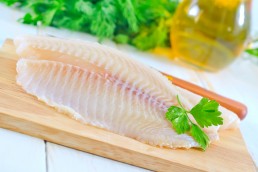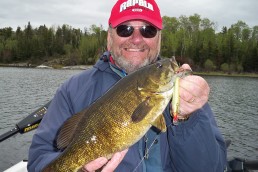Basics of Catching Channel Catfish
SHARE THIS POST
Catfish season is upon us. Fishing for channel catfish is the most basic of angling pursuit available to anglers. It is as simple as a hooked worm on a line attached to a stick, or as sophisticated as spinning gear, a space-age composite rod and crankbaits. It is the choice of those who spend a lot of money and those that do not. The one thing both have in common is that they must find the fish.
Everything about catfish patterns relate to their search for food. They eat almost everything in their environment. By using slack-water ambush points, they conserve energy until some food comes their way. They relate to brush, cutback banks, and riprap for their eating and spawning activity.
Anglers often fish for channel catfish using natural baits like: cut shad, cut herring, nightcrawlers, minnows, shrimp, chicken liver and turkey liver. In other times of the year, prepared baits (stink or dip baits) are popular.
This time of the year, catfish feed actively and attack anything that invades their territory as they spawn and guard the nest and young of the year.
Structured approach
Look for structure. During the day, fish seek deep water away from shore. As the water cools, they move to the flats and shallow-water structure.
Are you enjoying this post?
You can be among the first to get the latest info on where to go, what to use and how to use it!
In areas that were once part of the main channel, probe structure that is closest to the current. In backwater areas, look for the current to boil. Anchor upstream of the boil and cast to it. The fish are tight up against the structure.
On rivers with wing dams, look to the outside of an eddy at the end of a wing dam. Fish like the wing dams because there is less current for them to fight. Dams that have been silted in are less productive, due to the catfish’s love of clean, hard bottoms. A damaged wing dam can create two current breaks, one at the end and one where the break has occurred.
In lakes or reservoirs, fish tend to prefer the old, main channel as it brings food to them. Look for structure in current areas. By looking at the shoreline, one can often find old roadways that lead right down into the water. In the water, the rocks and blacktop of the old roadway provide structure. Additionally, roadbeds lead to old farmsteads. They provide old building foundations and more structure.
Advanced angling
Electronic fish locators are good for finding structure. Catfish like clean bottoms and structure like rock and hard surfaces. In looking at wood structure, remember catfish want current. Look for wood usually in the form of trees. The bigger the tree, the more fish will hold near it. Smaller fish feed on the outside of the tree. Larger fish will be down in the lower branches.
Big cats are in deep brush or an exposed root system at the base of large trees. Just move up into the brush and jig the bait down to them. Go after them and yank ‘em out. It is important to position yourself so you can get the fish out of the brush without getting hung up.
MWO
SHARE THIS POST
Did you enjoy this post?
You can be among the first to get the latest info on where to go, what to use and how to use it!
Don Gasaway
Don Gasaway is a veteran freelance outdoor writer from Marion, Ill. He may also be found at: https://www.facebook.com/DonGasawayWriter and facebook.com/Wandering Angler. Comments are welcome



